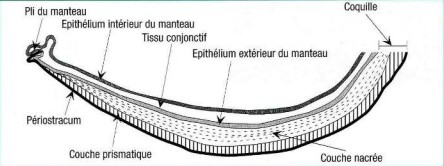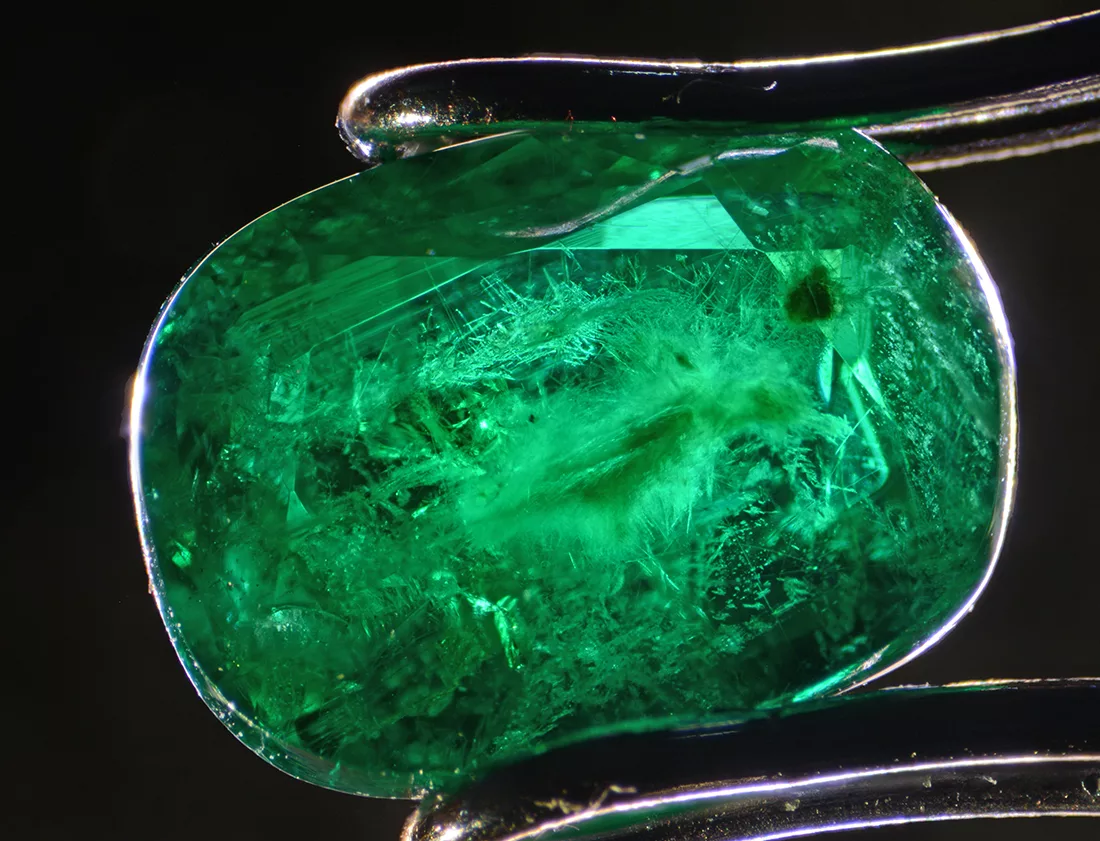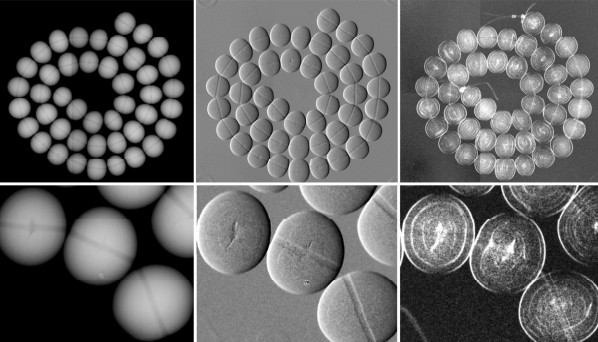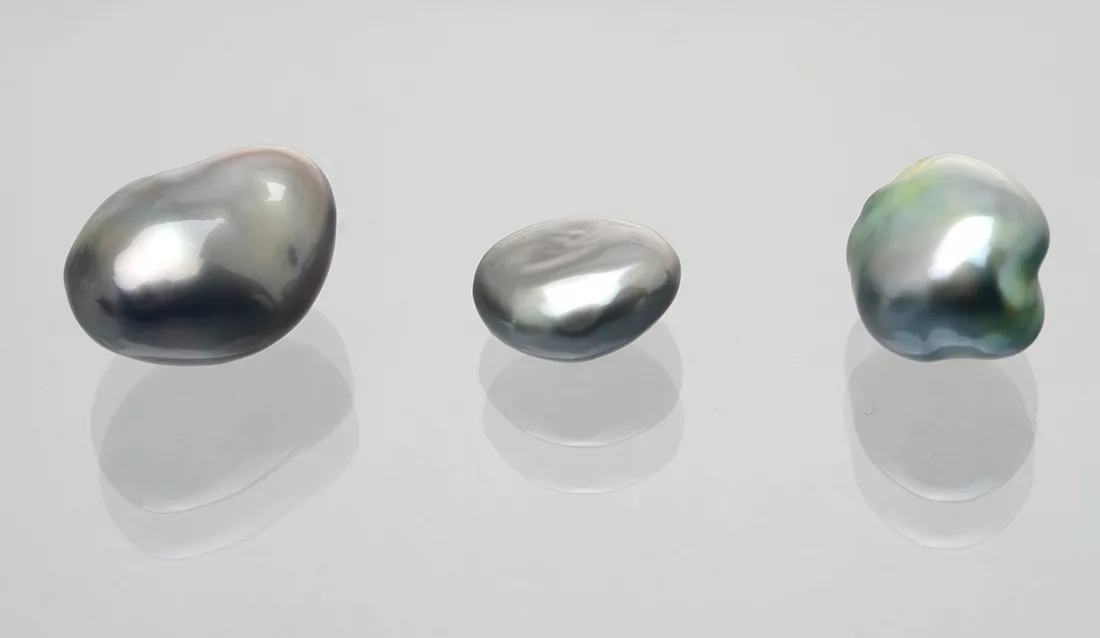
New Beads in Cultured Pearls
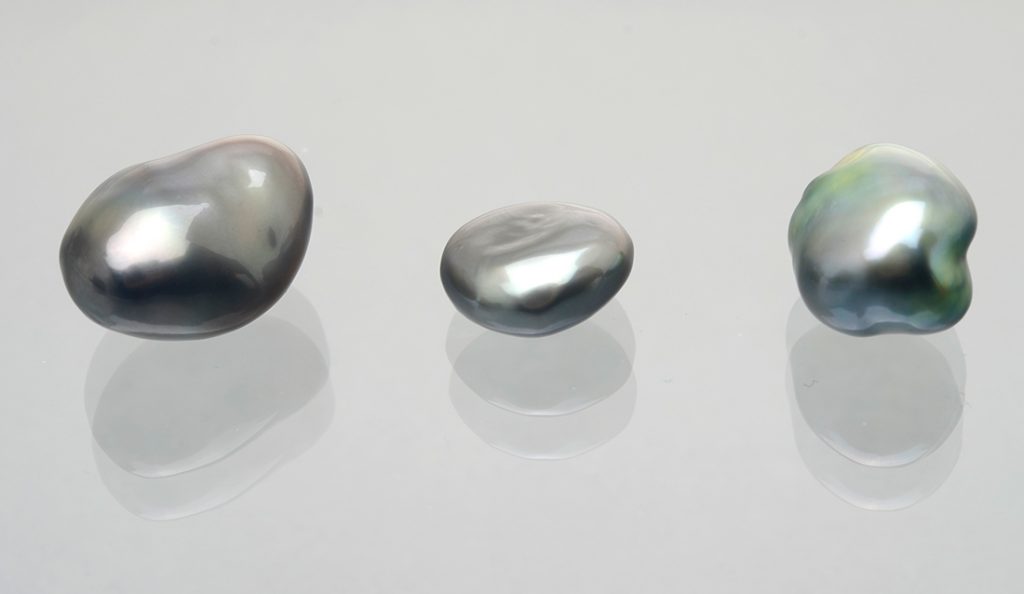
by Dr. Laurent E. Cartier, first published in Facette 21 (February 2014)
We were presented with samples of a new type of pearl product from French Polynesia by a pearl trader during the 2012 BaselWorld show. These cultured pearls had unusual shapes, came in large sizes (up to 23 mm) and were characterised by a high visually appealing lustre. These pearls were called ‘Keshi baroque’ cultured pearls. However after we carried out radiographic analysis, it was already clear that these were baroque-shaped beaded cultured pearls, making the use of the term ‘Keshi’ wrong. Similar baroque- shaped beaded cultured pearls were later encountered at the September Hong Kong Jewellery show in French Polynesia and Switzerland. Samples were donated to the SSEF and we were able to carry out closer examination of these cultured pearls in 2013 to understand their formation mechanisms.
For this investigation, we studied and analysed two new pearl products: 1) a first generation product using an organic nucleus, so far not described in the gemmological literature (group A pearls in this study) and 2) a second generation product using freshwater shell pieces as beads for large baroque- shaped cultured pearls. The innovation (by Imai Seikaku Co. Ltd., Japan) to use organic nuclei in the first generation has two main reasons. First, to increase the growth rate and size of a pearl sac in a first generation and thus to be able to produce large sized cultured pearls faster than by the traditional method of grafting beads of increasing size from one generation to the next. Inserting a small nucleus also means that a smaller incision into the gonad is necessary, thereby reducing the risk of rejection and oyster mortality. A second reason for using this type of inflating bead is that a relatively young pearl sac has a better capacity to secrete nacre and produce a pearl with good colour and lustre, as statistical studies of pearl harvests have shown. When comparing a third generation pearl harvest to that of a first generation harvest, it is obvious that the average lustre of pearls is higher in first generation pearls. The rationale behind this innovation in nucleus technology is simple: reduced pearl growth time lowers costs and a potentially larger high quality pearl brings more income to a pearl farmer.
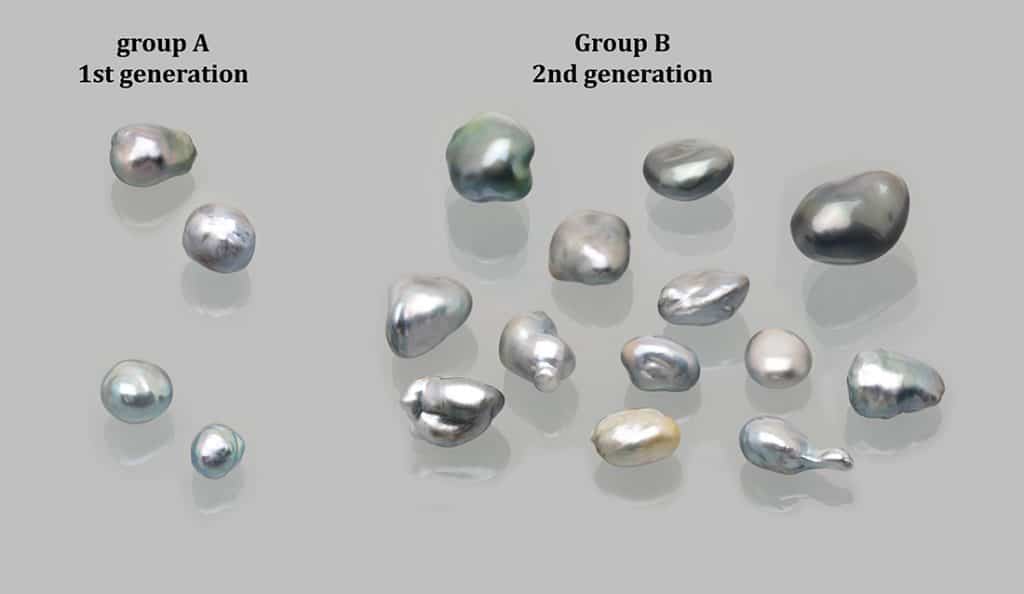
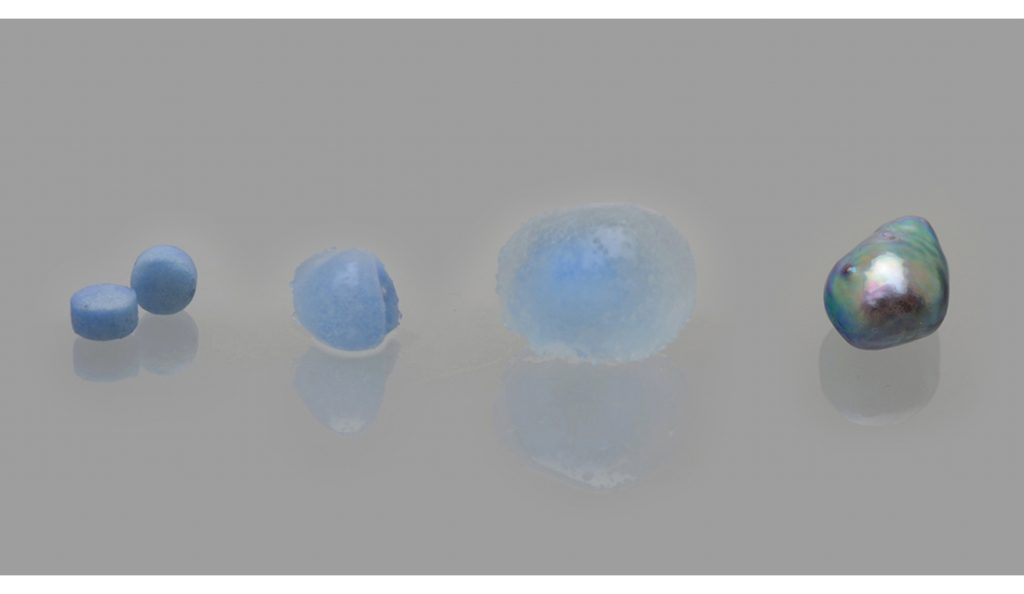
Although the pearls seen in Figure 1 were first described as ‘Keshi’ baroque cultured pearls, the use of this term is wrong. These pearls contain a baroque-shaped shell nucleus and are therefore beaded cultured pearls. This innovation in nucleus material and the resulting pearls are also interesting samples to study in order to better understand the formation of the pearl sac and of pearls. Although the cultured pearl samples (of second generation) studied in this article come from Pinctada margartifera, these nuclei are also reportedly being used in Pinctada maxima production in Indonesia. The baroque-shaped beaded cultured pearls described in this article are a niche product on the market at present. They have been produced to also meet demand for large baroque cultured pearls. It will be interesting to follow what developments new types of nuclei, such as the organic nuclei described in this article, will lead to in the production of cultured pearls. Both generations of these new types of pearl product can be clearly identified as beaded cultured pearls using the techniques available in a gemmological laboratory.
The full article on these new types of beads and cultured pearls can be accessed here.
